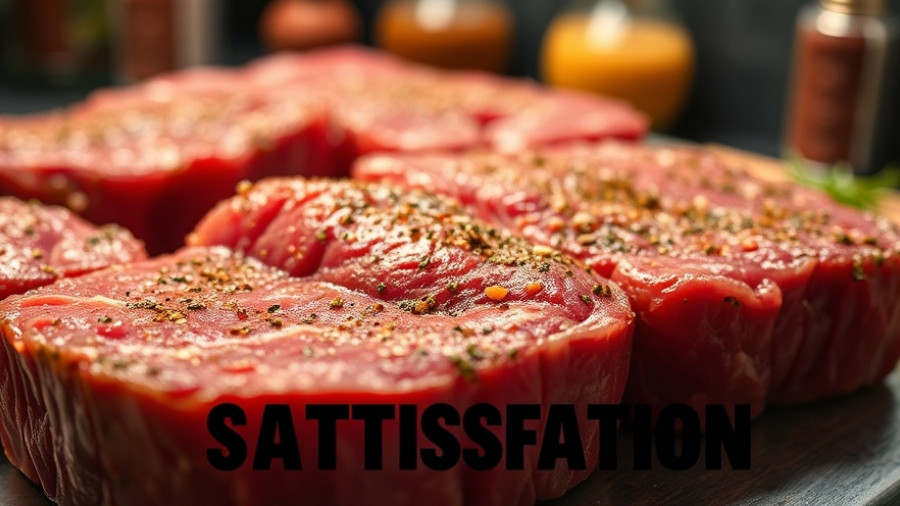
Ribeye Revelations: A Steak Lover's Dilemma
In a world where consumer choices are paramount, the quest for the perfect ribeye can be a delectable adventure or a disappointing challenge. Recent discussions have highlighted the perplexing experience of purchasing a ribeye steak, especially at a price of $14.99 a pound – which is surprisingly considered a deal in today’s market. However, this excitement can quickly turn sour. How does one reconcile the thrill of grilling a ribeye with the unexpected revelation of toughness?
In 'First Steak I've Bought in Months! Sale Price $14.99 for Ribeye and They Were Trash', the discussion unveils the challenges of sourcing quality meat, inspiring deeper analysis on how to navigate ribeye purchases.
Understanding Meat Quality: What’s in a Label?
One of the striking elements of the recent ribeye endeavor was the unexpected toughness of the meat, marketed as "Star Angus" beef with a label boasting USDA certification for tenderness. This raises essential questions about meat quality and labeling. The USDA label aims to assure consumers of the product's quality; however, personal experiences sometimes tell a different story. If you've encountered misleading labels before, you’re not alone. It's crucial to familiarize yourself with reputable brands and to scrutinize the labels on meat products before making a purchase to ensure you get the quality you desire.
Price vs. Quality: Navigating Grocery Purchases
Prices of meat have skyrocketed recently, which plays a significant role in consumer decisions. With prices rising, it’s tempting to lean towards bargains. Yet, understanding price versus quality can mean the difference between a memorable meal and one that leaves you disappointed. Consumers should consider where their meat is sourced from; local chains often provide better options compared to nationwide brands. One suggestion was to opt for better-known, quality producers instead of lesser-known local brands that may not meet expectations.
Making the Most of Your Ingredients
Despite the disappointing quality of the ribeye, there's always the potential for culinary creativity. The use of robust marinades and garnishes can enhance any steak, even if it lacks tenderness. Preparing spice mixtures or sauces elevated the quality of the dish, underscoring the importance of flavoring when faced with less-than-ideal ingredients. As cooking enthusiasts, exploring inventive ways to amplify flavor can salvage a dining experience, turning it into a delightful moment shared with friends or family.
The Importance of Community Shopping
For many, shopping at local grocery stores is an experience steeped in community connection. Exploring local chains allows shoppers to support their neighborhoods while discovering hidden culinary gems. Having insight from other consumers about product quality can help navigate choices in the grocery aisles. These connections emphasize why engaging with local food networks can enhance dining experiences and make meat purchases more fulfilling.
Conclusion: A Lesson in Culinary Choices
Ultimately, the journey of purchasing a ribeye reminds us of the broader landscape of consumerism and quality in food choices today. By sharing experiences like these, consumers can arm themselves with knowledge that makes every culinary choice impactful. Whether you're grilling steak on a festive gathering or preparing a cozy meal for yourself, knowing what to buy can make all the difference. As we navigate inflation and rising prices, awareness and careful selection lead to more satisfying dining experiences. So the next time you're faced with ooh-ing and ahh-ing over a ribeye, remember to look beyond the price tag.
So, fellow food lovers and travel enthusiasts, the next time you encounter a ribeye at your local store, consider what you've learned here and choose wisely. Happy cooking!
 Add Row
Add Row  Add
Add 




Write A Comment